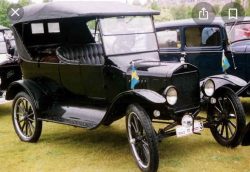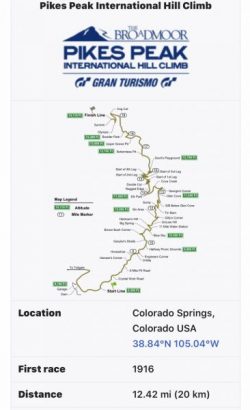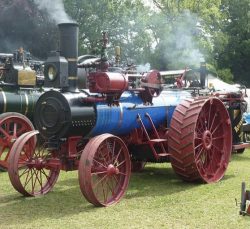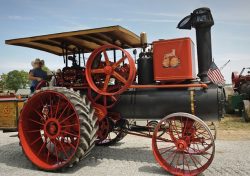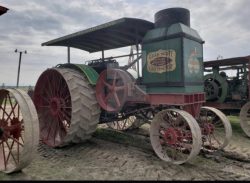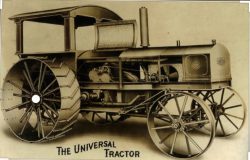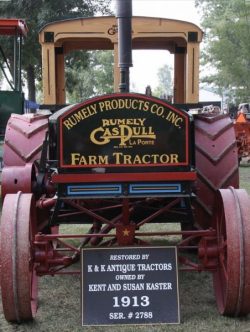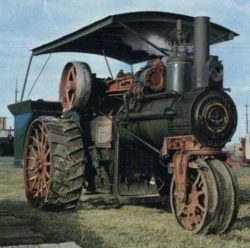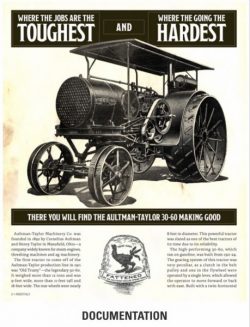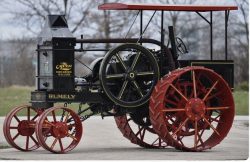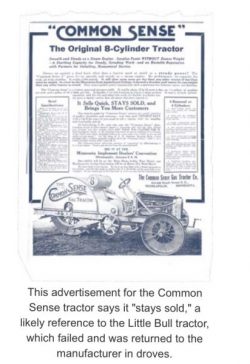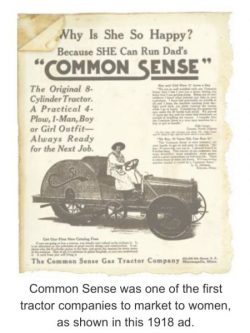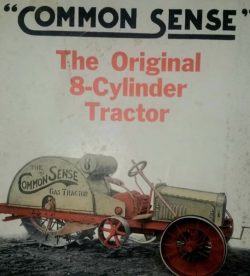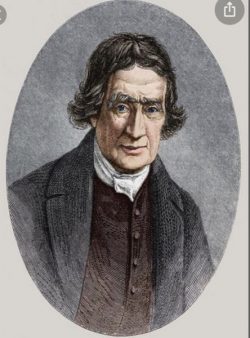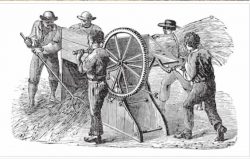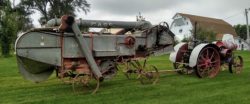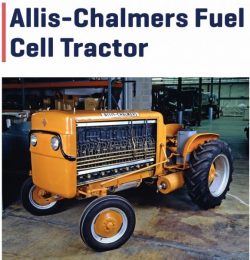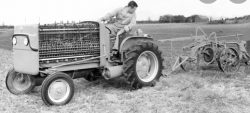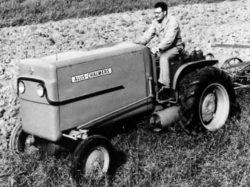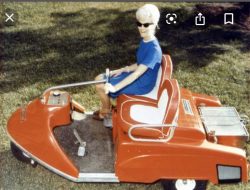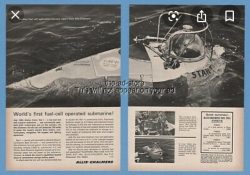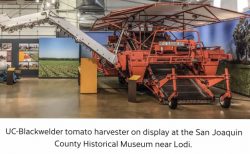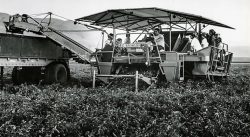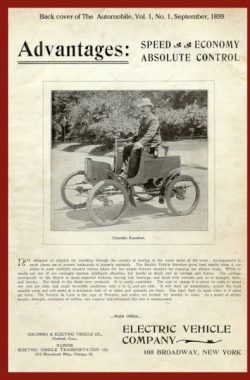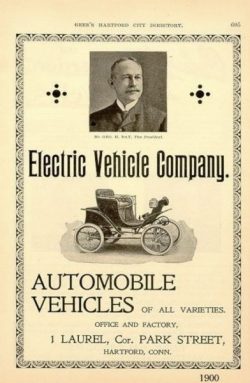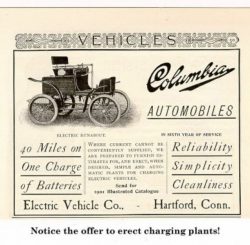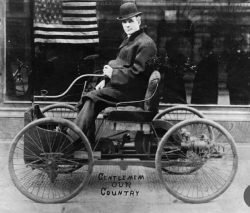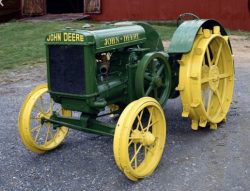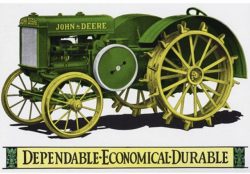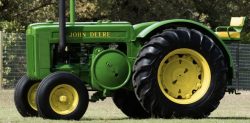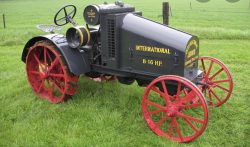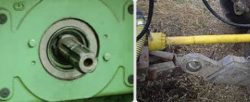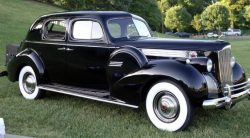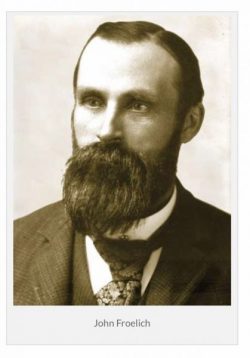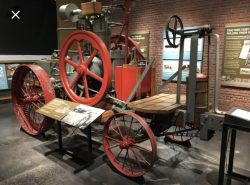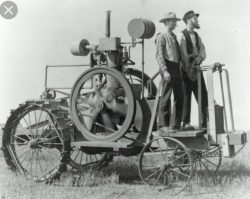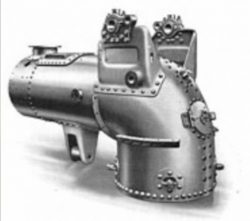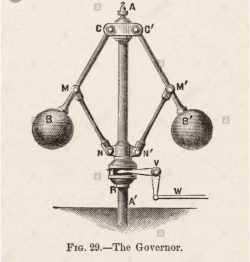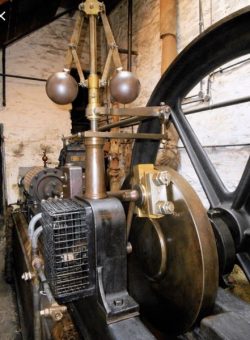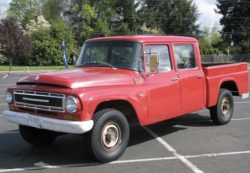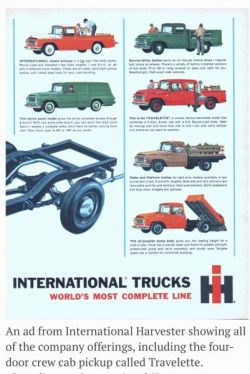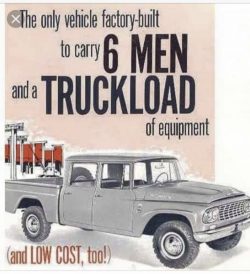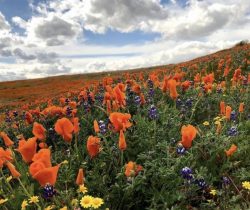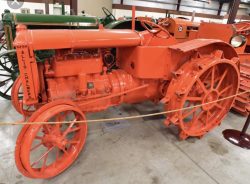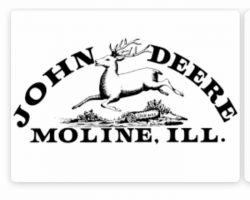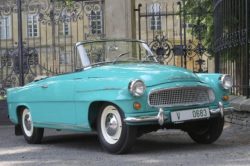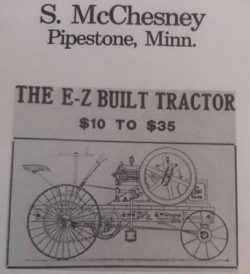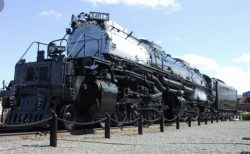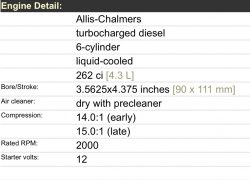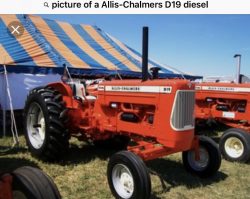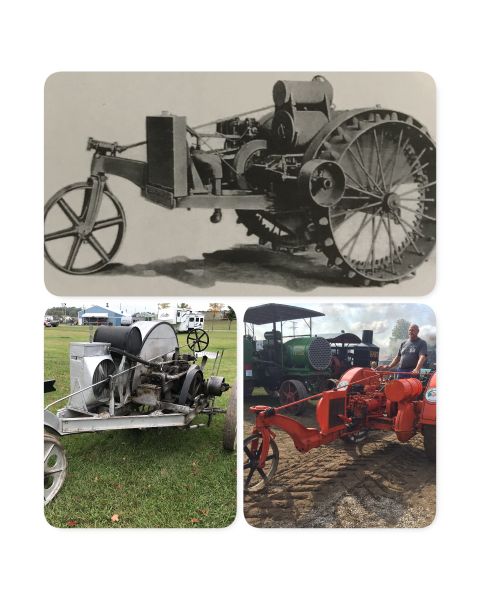Question 40:
How did the Ford Model T car get the nickname “Tin Lizzie”?
-
Named after Henry Ford’s dogs “Tin Lizzie”
-
It was made from recycled tin cans
-
The nickname came from a Ford Model T race car
-
It was named after a Ford Motor Company assembly line worker Elizabeth Tinbble
Answer: 3. The nickname came from a Ford Model T race car
History: The Model T Ford was the most influential car of the 20th century. It was priced so that the average American could afford it. The Model T was manufactured from 1908 to 1927 with over 15 million sold. The Ford Model T held the record as the best-selling car in the world until the Volkswagen Beetle beat that record in 1972.
How did the model T Ford get the nickname “Tin Lizzie”? In 1922, a championship race was held in Pikes Peak, Colorado. Entered as one of the contestants was Noel Bullock and his Ford Model T named “Old Liz”. Since Old Liz looked the worse for wear, as it was unpainted and had no hood, many race spectators compared Old Liz to an old tin can. By the start of the race, the car had the new nickname of “Tin Lizzie”. To everyone’s surprise, Tin Lizzie won the race. Having beaten even the most expensive cars at the race, Tin Lizzie proved both the durability and speed of the Model T.
Tin Lizzie’s surprise win was reported in newspapers across the county, leading to the use of the nickname “Tin Lizzie” for all Model T Ford cars. The Model T had other nicknames – “Leaping Lena” and “Flivver” – but it was the Tin Lizzie moniker that stuck.
1922 Ford model T touring car.
The Pikes Peak International Hill climb race is still held today. 1916 to current, 104 years.
This month’s trivia question was inspired by Jess Howe.
Congratulations to Shirley Booms, Lake City MI who won a 2021 Buckley Calendar for being the 11th person to correctly answer the January 2021 Buckley trivia contest question.
Question 39:
What do the following Farm Equipment Company’s have in common?
-
Advance Thresher Company
-
Gaar-Scott Company
-
Northwest Thresher Company
-
American Abel Engine & Thresher Company
-
Aultman-Taylor Company
Answer: They were all purchased by M. Rumely Company / Advance-Rumely Company
History: Meinrad Rumely emigrated from Germany in 1849, joining his brother John Rumely forming a foundry in La Porte, Indiana. The business expanded into the production of corn shellers & threshing machines. In 1887, Meinrad bought out his brother John and incorporated the M. Rumely Company. In 1895, Rumely added steam engines to its line. Rumely’s most famous product, the Rumely Oil Pull tractor was developed in 1909 and first sold to the public in 1910. The Rumely Oil Pull was a very successful tractor & sold well through the teens and early 20s.
Acquisitions & Mergers:
From 1911 to 1912 M. Rumely Company began purchasing other firms in the agricultural equipment business. Advance Thresher Company of Battle Creek, Michigan, was acquired in 1911, followed by the Gaar-Scott Company of Richmond, Indiana the same year. In 1912 Rumely expanded further with the purchase of Northwest Thresher Company of Stillwater, Minnesota, and the American-Abell Engine & Thresher Company of Toronto, Canada. All these companies were first reorganized in 1913 as two connected firms, the existing M. Rumely Company Inc. (the manufacturing side) and the new Rumely Products Company (the sales & distribution side). A further reorganization brought about the final Advance-Rumely Company in 1915. This streamlined the company and highlighted its famous forebears. In 1924 Advance-Rumely purchased Aultman & Taylor Company of Mansfield, Ohio.
Despite all of the history and diversity in engineering acquired, along with all of their corporate assets, Rumely was slow to develop new tractor designs staying with the dated Oil Pull design as other companies come out with new modern tractors. Rumely came out with the 6A tractor in 1930, it was a Standard tread Tractor with a more conventional design, but it was too little too late. The Great Depression of 1929 hit Advance-Rumely hard and in January of 1930, the Rumely management began seeking a buyer for the company. Allis-Chalmers agreed to take over the historic company in May of 1931.
An Advance steam traction engine made by the Advance Thresher Company of Battle Creek, Michigan. Advance was purchased by M. Rumely in 1911.
Gaar-Scott steam traction engine made by the Gaar-Scott Company of Richmond, Indiana. Gaar-Scott was purchased by M. Rumely in 1911.
Gaar-Scott Tiger Pull tractor. The Tiger Pull looked a lot like the Rumely Oil Pull tractor but ran on gasoline and the Oil Pull ran on kerosene.
The Universal Tractor, made by Northwest Thresher Company of Stillwater, Minnesota. Rumely purchased Northwest in 1912 so it could add the Universal tractor to its line renaming it the Gas Pull.
A 1913 Rumely Gas Pull tractor.
An American – Abell steam traction engine, made by the American-Abell Engine & Thresher Company of Toronto, Canada. Rumely purchased American-Abell in 1912.
The Aultman & Taylor 30-60 tractor was a very well-made and popular tractor. Rumely purchased Aultman & Taylor in 1924 to eliminate the competition.
The famous Rumely Oil Pull tractor was made from 1910 to 1929. There were many models and sizes.
Congratulations to Susan Stant of Penndel, PA who won a “Buckley Old Engine Show: A Fifty-Year History” book for being the 12th person to correctly answer the November 2020 Buckley trivia contest question.
Question 38:
What tractor make was the first to have an 8 cylinder engine?
Answer: The Common Sense 20-40 tractor
History: The Common Sense Gas Tractor Company of Minneapolis, Minnesota, built the first tractor with an 8 cylinder engine. The Common Sense tractor had a horsepower rating of 20-40 and was rated to pull a four bottom plow. It sold for $2,200, and was manufactured from 1916 to 1919.
In 1919, the Farm Power Sales Company of Minneapolis took over the company. It sold what tractors were still in stock, but did not continue to manufacture them. By 1920, this first tractor to have an 8 cylinder engine slid into obscurity.
Congratulations to Joshua Reps of Lewiston, MN who won a 2021 Buckley calendar for being the second person to correctly answer the September 2020 Buckley trivia contest question.
Question 37:
Who invented the first usable threshing machine?
Answer: Andrew Meikle
History: Andrew Meikle was born in Scotland in 1719. He was a millwright and agricultural engineer. Meikle gets credit for inventing the first usable threshing machine.
Throughout history, grain had been separated by a highly laborious manual process involving flails. A flail is a threshing tool that consists of a wooden staff with a short heavy stick swinging from it. It was used to beat the grain from the chaff and straw. The flails were swung by hand. Mechanical threshing arrived well before the mechanical reaper. A Scotsmen named Michael Menzies used a water wheel to power a set of flails in the mid-1700s, and another Scotsmen developed the first rotary cylinder shortly after. But it was yet another Scotsman, Andrew Meikle, who developed the concept even further with a machine that included a rotary cylinder and a mechanism that we now call a “straw walker”, a device to move the straw out of the thresher creating the first practical threshing machine. Andrew Meikle patented his threshing machine in 1788. These mechanical threshers made a big impression on the farming communities of the British Isles. Farm laborers rose up in protest against the machines that were depriving them of gainful employment. Many owners of the new machines were threatened with violence if they did not destroy the machines. Even so, an effective threshing machine opened the way for the agricultural revolution that followed.
Congratulations to Bill Ehrlich of Cass City, MI who won a 2021 Buckley calendar for being the ninth person to correctly answer the August 2020 Buckley trivia contest question.
Question 36:
What company developed the first fuel-cell-powered vehicle?
Answer: Allis-Chalmers
History: In 1959 Allis-Chalmers debuted a new concept tractor powered by fuel cells. Fuel cells produce electrical power directly through a chemical reaction, without heat, smoke, or noise. The tractor had a 20 horsepower electric motor powered by 1,008 fuel cells. In October of 1959, during a field demonstration in West Allis, Wisconsin the fuel cell tractor plowed a field of alfalfa with a two-bottom trailer plow. The tractor was never meant for production, it was strictly a research project. After displaying the tractor around the country Allis-Chalmers donated the tractor to the Smithsonian Institute. The tractor is now on loan to the McLeod Historical Society Museum in Minnesota.
Allis-Chalmers did extensive research into fuel cell technology, marking a long list of firsts, in 1962, AC debuted the first fuel cell-powered golf cart, in 1963, the first fuel cell-powered forklift, and in 1964, in conjunction with General Dynamics, the first one-man fuel cell-powered submarine. Allis-Chalmers also had fuel-cell contracts with the US Army, US Air Force, & NASA.
The Allis-Chalmers fuel cell tractor plowing with a two-bottom trailer plow.
The 1959 Allis-Chalmers fuel cell tractor with its side curtains in place.
The 1962 Allis-Chalmers fuel cell-powered golf cart.
The Star 1, the first fuel cell-powered submarine.
Congratulations to Art Holzschu, Petoskey, MI won a 2021 Buckley calendar for being the fourth person to correctly answer the July 2020 Buckley trivia contest question.
Question 35:
What year was the first mechanical tomato harvester invented?
Answer: 1959
History: Labor shortages during World War 2 stimulated interest in the development of a machine to pick tomatoes. In 1949, University of California botanist G.C. “Jack” Hanna & University agricultural engineer Coby Lorenzen started developing a mechanical tomato harvester.
Machine harvesting tomatoes involved many functions, such as cutting & lifting the vines, but separating the tomatoes from the vines proved to be the most challenging function to mechanize. Lorenzen & Hanna experimented with 15 different separation solutions over a ten-year span. Steven Sluka joined the team in the late 1950s and designed an efficient separator. They also developed a new tomato variety that would be tough enough to survive a harvester.
As with all revolutionary inventions, many people believed the new machine would eliminate jobs. However, concerns were not just with the harvester but with the new heartier tomato variety. The new variety became known as the “square tomato”. This name came from the blocky shape of the fruit. Its shape prevented it from rolling off the conveyor belt.
Before the harvester, tomatoes had to be picked by hand, since tomatoes are more delicate and are very time consuming to pick. The new harvester revolutionized the tomato industry almost overnight. Within five years most tomato growers were using mechanical harvesters, as well as growing the new hearty tomato variety.
Today nearly all tomatoes grown for use in sauces, juice, and more are harvested by Lorenzen, Sluka & Hanna’s mechanical tomato harvester. In 1972 they received the John Scott medal in honor of their achievement. The agricultural and biological engineers designated the tomato harvester a historic landmark.
Congratulations to Jay Buyze of Hingham, WI. Jay won a 2021 Buckley calendar for being the seventh person to correctly answer the June 2020 Buckley trivia contest question.
Question 34:
Who invented the magneto and in what year?
Answer: Hippolyte Pixii in 1832
History: The first magneto was built by French instrument maker Hippolyte Pixii in 1832, just one year after Michael Faraday’s discovery of the principles of electromagnetic induction. Hippolyte Pixii’s hand-crank operated magneto was the first practical generator of electrical current.
The magneto received a makeover in 1899 by automaker Daimler Phonix as part of the ignition system of internal combustion engines. The mechanism sends high levels of voltage to the spark plug, which ignites the gasoline in the combustion chamber.
Congratulations to Steve Balough of Caulfield, MO. Steve won a 2021 Buckley calendar for being the first person to correctly answer the May 2020 Buckley trivia contest question.
Question 33:
What year and on what make of automobile has the first electric headlamps (headlights) available?
Answer: 1898 Columbia Electric Car
History: The first electric headlamps (headlights) were introduced in 1898 on the Columbia Electric Car made by the Electric Vehicle Company of Hartford Connecticut. They were an optional accessory. The earliest headlamps were fueled by acetylene or oil and were prominent in the 1880s & early 1900s. Acetylene lamps were popular because the flame was resistant to wind & rain. In 1908, the Peerless Motor Company was the first car company to make electric headlamps standard.
Congratulations to Pete Hall of Traverse City, MI. Pete won a 2020 Buckley calendar for being the sixth person to correctly answer the April 2020 Buckley trivia contest question.
Question 32:
Who said:
I felt perfectly certain that horses, considering all the bother of attending them and the expense of feeding, did not earn their keep. The obvious thing to do was to design and build a steam engine that would be light enough to run an ordinary wagon or pull a plow.
A) Winston Churchill
B) Jerome Increase Case
C) Henry Ford
D) John Deere
E) Mr. Rogers
F) Joseph Huber
Answer: C) Henry Ford
History: Henry Ford was an American industrialist & the founder of the Ford Motor Company.
Born: July 30, 1863
Died: April 7, 1947
Henry Ford was a huge advocate for the farmer. For many years, Ford kept insisting that American agriculture should be made more mechanized by substituting mechanical power for animal power on the farm.
Henry Ford sitting on his first car. He made the Quadricycle in 1896.
Congratulations to Melissa Maxson of Grand Rapids, Michigan. Melissa won a 2020 Buckley calendar for being the eighth person to correctly answer the March 2020 Buckley trivia contest question.
Question 31:
Questions: What tractor make & model had the longest production run?
Answer: The John Deere Model D had a 30-year production run.
History: The John Deere Model D was in production for 30 years. Production started on March 1, 1923, and ended on July 3, 1953.
The Model D was a standard tread tractor with what would become John Deere’s famous two-cylinder engine producing 15-27 HP in 1923 and increasing in horsepower over the years to 38.2 HP at the drawbar & 42.05 on the belt. The model D got many improvements and styling changes over the years
Honorable mention – If your answer was the Farmall Cub, please note that the Cub went through three name changes.
The original Farmall Cub was manufactured from 1947 to 1964, then it had a name change becoming the International Cub and was manufactured from 1964 until 1975, then finally the New International Cub was manufactured from 1975 to 1979
Congratulations to Dave Titzer of Chandler, Illinois. Dave won a 2020 Buckley calendar for being the third person to correctly answer the February 2020 Buckley trivia contest question.
Question 30:
Question: Three-part question:
1 – What farm equipment company was first to market with a PTO (power take-off) on a tractor?
2 – What make and model production tractor was it introduced on?
3 – What year was it introduced?
Answer:
1 – International-Harvester
2 – The International-Harvester model 8-16 tractor
3 – 1918
History: Experimental power take-offs were tried as early as 1878, and various homemade versions arose over the subsequent decades. International-Harvester Company (IHC) was first to market with a PTO on a production tractor, with its model 8-16 introduced in 1918. Edward A. Johnson, an IHC engineer had been impressed by a homemade PTO that he saw in France about a decade before, improvised by a French farmer and mechanic surnamed Gougis. Johnson & his IHC colleagues incorporated the new idea into the 8-16 tractor and designed a family of implements to take advantage of the new feature. IHC was not alone in the market for long, as within a year PTOs were appearing on other production tractors from other companies. In 1920 IHC offered the PTO option on their new 15-30 tractor. The 15-30 was the first PTO equipped tractor to be submitted for a Nebraska tractor test.
What is a PTO? The PTO (power-take-off) shaft is an efficient means of transferring mechanical power between a farm tractor and implements.
International-Harvester 8-16 tractor
Tractor PTO (power take-off)
Congratulations to Chris Duggins of Eaton, Ohio. Chris won a 2020 Buckley calendar for being the 10th person to correctly answer the January 2020 Buckley trivia contest question.
Question 29:
Question: What auto manufacturer was the first to offer factory-installed air conditioning, and in what model year was it introduced?
Answer: Packard Motor Car Company In 1940
History: The Packard Motor Car Company introduced the first factory-installed air conditioner on a 1940 model at the 1939 Chicago Auto Show. The Weather Conditioner, as Packard called it, ran on a compressor but the refrigeration coils were located behind the backseat. The Weather Conditioners were manufactured by the Bishop and Babcock Company of Cleveland, Ohio. Packard fully warranted and marketed the units. However, it was not commercially successful for a number of reasons: 1) The main evaporator and blower system took up half of the trunk space. 2) It had no temperature thermostat or shut off mechanism other than switching the blower off. 3) The several feet of plumbing going back and forth between the engine compartment and the trunk proved unreliable in service. 4) The price of Packard’s Weather Conditioner in 1940 was $274.00 that would be about $4,962.00 today. The option was discontinued after 1941. It would be another 10 years before a more efficient system would be available.
Congratulations to Kenny Murawski of Port Austin, Michigan. Kenny won a 2020 Buckley calendar for being the 4th person to correctly answer the December 2019 Buckley trivia contest question.
Question 28:
Question: Who invented the first successful gasoline traction engine AKA tractor?
Answer: John Froelich
History: In 1892, John Froelich invented the first successful gasoline traction engine AKA tractor that had both forward & reverse gears.
With the help of his Blacksmith, Will Mann, they mounted a 16 horsepower one cylinder Van Duzen gas engine on a Robinson steam engine chassis. They designed their own gearbox. After completing the tractor, Froelich & Mann brought it to Langford, South Dakota where it was belted to a J.I. Case threshing machine. They threshed 72,000 bushels of grain in 52 days, a successful first run. On the heels of his success, he shipped his tractor to Waterloo, Iowa. There he showed his invention to a group of businessmen. The group was so impressed that they formed a company to manufacture the Froelich gas traction engine (tractor). They named the company The Waterloo Gasoline Traction Engine Company and named John as President. Unfortunately, the tractor did not sell well. Two were sold but were returned to the factory shortly thereafter. The company decided to manufacture stationary gasoline engines to provide income while tractor experiments continued, hence the famous Waterloo Boy gas engine was born. In 1895, the Waterloo Boy Gasoline Engine Company was incorporated, but Froelich, whose interest was in tractors and not stationary gas engines, chose to leave the company. The Waterloo Company continued to build stationary engines and within a few years became one of the largest engine builders in the United States. In 1914, Waterloo Gasoline Engine Company became one of the strongest competitors in the industry with the introduction of their new lightweight tractor, the Waterloo Boy Model R followed by the Model N. This made them a very successful tractor manufacturer. In 1918, John Deere purchased the Waterloo Gasoline Engine Company and its famous Waterloo Boy tractor.
Congratulations to Linda Peterson of Menominee, Michigan. Linda won a 2020 Buckley calendar for being the second person to correctly answer the November 2019 Buckley trivia contest question.
Thanks,
Buckley Old Engine Show
Question 27:
Question: What is this type of boiler called?
Answer: Pistol boiler
History: The name pistol boiler derives from the smooth curve of the outer firebox flowing into the boiler barrel & a resemblance to the stock of an early 19th-century pistol.
The English firm Rodey & Company was well-known builder of both large stationary steam engines and small steam tractors. Rodey developed its own version of this stay-less domed firebox known as the pistol boiler. Rodey’s pistol boiler was small, with a barrel diameter of only two feet. The inner firebox was formed in one piece as a truncated cone with a domed top. Although it was a small boiler, it had a large grate area that permitted the burning of coke as fuel (coke is a gray, hard & porous fuel made by heating coal or oil). The front face of this cone was flattened inwards to form the firebox tubeplate. 54 1-1/2″ fire-tubes were used. This allowed a relatively high working pressure of 250 PSI to be used.
The firebox door was also of a novel design. As the backplate sloped so steeply, the door was top-hinged & opened inward rather than outward. Rodey used this pistol boiler design in their 6-ton steam wagon (steam truck) and in their Express steam tractors as well as in their tandem steam rollers.
Congratulations to Kathy George of St. Johns, Michigan. Kathy won a 2020 Buckley calendar for being the eleventh person to correctly answer the October 2019 Buckley trivia contest question.
Question 26:
Congratulations to Jim Lautner of Cedar, Michigan. Jim won a 2020 Buckley calendar for being the eighth person to correctly answer the September 2019 Buckley trivia contest question.
Question: In 1979 thousands of farmer and over 600 tractors converged on the National Mall in Washington DC to participate in the February 5, 1979, American Agriculture Movement “_____________” protest. What was the name of the protest?
Answer: Tractorcade
History: In 1979 thousands of farmers and over 600 Tractors converged on the National Mall in Washington DC to participate in the February 5, 1979, American Agriculture Movement Tractorcade protest.
The American Agriculture Movement (AAM) was organized in the fall of 1977 in response to a growing farm crisis. The 1977 Farm Bill had ignited concerns for many farmers who believed the bill would adversely affect farm income by lowering commodity prices to less than the cost of production. Gerald McCathern coordinated the DC demonstration, hoping to bring the desperate financial situation facing American farmers to the attention of Congress.
The protesting farmer occupied the National Mall for weeks, demanding more pay for crops & lobbying for an increased role in agricultural policy decisions. An unsympathetic Washington billed the farmer as a nuisance that was costing taxpayers an estimated $1 million in tractor damage to the National Mall. There were considerable damage and scuffles with police, a tractor was even burned on the national mall in effigy.
Tides turn on Presidents’ Day weekend when a blizzard hits, covering the city in two feet of snow. The farmers, in possession of some of the only vehicles able to move, rose to the occasion & helped dig out Washington DC. They plowed out hundreds of cars & aided stranded citizens. They transported doctors & nurses to hospitals, where the wives of AAM farmers helped cook & clean became regular staff was unable to get to work. Twenty-two inched & a whole lot of goodwill turned these agitators into heroes.
During their weeks on the National Mall, farmers frequented the Smithsonian museums, taking refuge from the cold winter days and eating lunch in the cafeterias. In 1986, the American Agricultural Movement donated one of the tractors from the 1979 Tractorcade to the National Museum of American History. Since those times, the AAM plays a key role in agricultural policymaking in Washington DC.
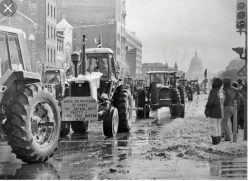
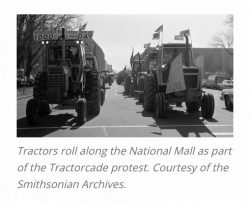
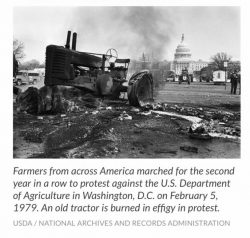
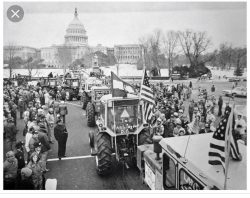
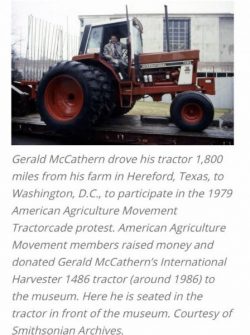
Question 25:
Where did the phrase “Balls-out“ come from?
Answer: The phrase has its origins in the operation of a steam engines flyball governor.
History: The origin of the phrase “balls out” is this: Steam engines had fly-ball governors. The governor consisted of a rod with two ball-shaped weights on the ends. When the steam engine was running at maximum speed centrifugal force moves the balls up or out.
“Balls out” – adverb “giving it one’s all”, “extreme effort”, “head long”, “reckless abandon”
Congratulations to Davy Stotts of Jonesboro, Arkansas. Davy won a 2020 Buckley calendar for being the tenth person to correctly answer the August 2019 Buckley trivia contest question.
Question 24:
Question: What company introduced the first crew cab pickup truck? What year was it introduced? What was this pickup truck model called? (3-part question)
Answers: International Harvester, 1957, the Travelette
History: Today the four-door crew cab pickup truck dominates the market, but early pickups were mostly single cab designs with only room for two to three people. International Harvester broke new ground when the company introduced the first pickup truck with a crew cab body style. The 1957 International Harvester Travelette was the first crew cab pickup truck. The Travelette had room for six adults in its spacious cab. The first few production years the Travelette has three doors, but in 1961 International redesigned the truck adding the fourth door. Finally, there was a pickup truck that could haul six workers to the job site. Dodge & Ford soon followed with versions of there own. The crew cab pickup truck would continue to be primarily a work-duty option until the 1990s when it became mainstream and the crew cab pickup truck exploded in popularity.
Congratulations to Mike Murphy of West Jefferson, NC. Mike won a 2020 Buckley calendar for being the third person to correctly answer the July 2019 Buckley trivia contest question.
Question 23:
Question: In 1929 Allis-Chalmers changed the paint color of its tractors from green to orange. What was the inspiration behind the color change?
A. ) A pumpkin patch
B. ) A workers orange lunch box
C. ) A blooming field of poppies
D. ) An orange tabby cat
Answer: C. ) A blooming field of poppies
History: While on a business trip to California in 1929, Harry Meritt, chief engineer of the Allis-Chalmers tractor division was inspired by a bright orange field of poppies. This led to the introduction of the Persian Orange color scheme that Allis-Chalmers tractors became famous for.
From 1914 to 1928 Allis-Chalmers tractors were painted green.
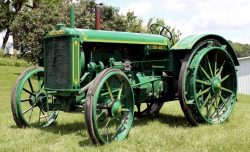
In 1929 Allis-Chalmers adopted it’s famous Persian Orange color.
Congratulations to Bill Ehrlich Jr of Cass City, MI. Bill won a vehicle window decal for being the seventh person to correctly answer the June 2019 Buckley trivia contest question.
Question 22:
Question: In 1876 the first John Deere trademark was a deer jumping over what?
Answer: A log
History: In 1876 John Deere registered its first trademark, a leaping deer jumping over a log.
Congratulations to Jack Hutchings of Jackson, MI. Jack won a 2019 Buckley calendar for being the fifth person to correctly answer the May 2019 Buckley trivia contest question.
Question 21:
What was the first communist-made car to be sold in the USA?
Answer: The Skoda Felicia
History: If you think that the Yugo was the first communist made car ever to be sold in the USA, think again.
Back in 1959, Czechoslovakian Skoda offered its compact Felicia model to U.S. buyers. For the late 1950s, it was very brave for a communist company to try to sell anything in America, but Skoda was brave enough to try.
The Felicia was an attractive, solid and competent car by European standards but tiny & under-powered by American standards. With almost no dealer network, high price due to export fees, and no marketing, the Felicia was doomed right from the start.
We did not receive a correct answer to the April 2019 Buckley trivia contest question; therefore, there is no winner. FIRST TIME EVER!!
Thanks!
Question 20:
Question: In 1921, there were 186 tractor manufacturers. Some found success, but most did not. The race was on to make a successful farm tractor and with that a memorable name for that tractor. Out of the tractors below, what tractor name is not a real tractor?
A) Multipedal
B) Angleworm
C) The Dirt Pull
D) Beltrail
E) Bean Track Pull
F) Boring
G) Creeping Grip
H) Klumb
I) Prairie Queen
J) Winnebago Chief
K) The E-Z Built Tractor
Answer: C) The Dirt Pull. Jim made it up.
History:
A) The Multipedal 18-35 tractor was a heavyweight crawler made by the F.C. Austin Company in 1918.
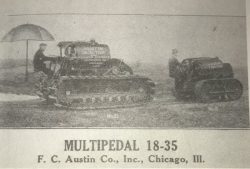
B) The Angleworm 10 tractor was made by the Badley Tractor Company of Portland, Oregon.
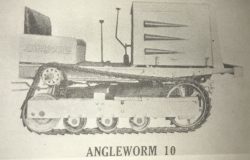
D) Beltrail Tractor was made by the Beltrail Tractor Company of Saint Paul, Minnesota from 1917 to 1920.
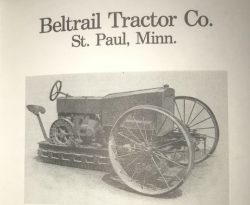
E) The Bean Track Pull tractor was made by the Bean Spray Pump Company of San Jose, California. They made a 6-10 HP from 1918 to 1920 and an 8-16 HP in 1920.
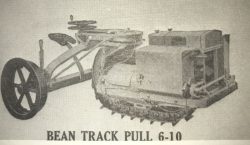
F) The Boring Tractor Corp of Rockford, Illinois made the Boring front wheel drive Plowing tractor from 1917 to 1922.
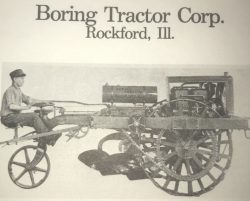
G) The Creeping Grip tractor was a 12-20 crawler made by the Bullock Tractor Company of Chicago, Illinois.
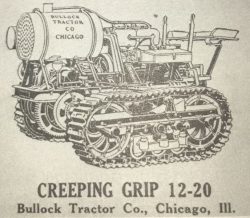
H) The Klumb Model F 16-32 tractor was made by the Dubuque Track & Tractor MFG Company of Dubuque, Iowa in 1920.
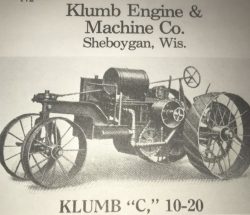
I) The Prairie Queen 8-16 tractor was made in Temple, Texas by the Prairie Queen Tractor Manufacturing Company in 1922 and sold for $765.00.
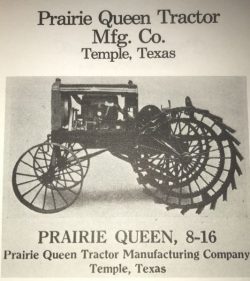
J) The Winnebago Chief tractor appeared in 1920. Winnebago Tractors used a four-cylinder engine of Winnebago’s own design & a three-speed selective transmission.
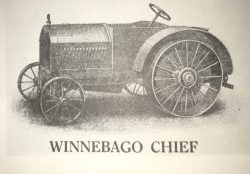
K) The E-Z Built tractor was made by S. McChesney of Pipestone, Minnesota in 1911. It was primarily intended as a self-propelled means of moving a heavy stationary gas engine around the farm.
Congratulations to Ronnie Cochran of Mount Carmel, IL. Ronnie won a vehicle window decal for being the twelfth person to correctly answer the February 2019 Buckley trivia contest question.
Question 19:
Question: In 1937, John Deere introduced its largest row-crop tractor to date, the John Deere model G. In 1942, John Deere changed the name of the Model G to the model GM and then in 1947 changed it back to the model G. Why did John Deere change the tractors model designation and what does the GM designation stand for?
Answer: From 1942 to 1947, the model G was produced as the John Deere model GM. The GM designation was created to receive government approval for a war-time price increase. The model GM stands for General Modern.
History: In 1937, John Deere introduced their largest row-crop tractor to date, the model G. The model G under when three style transformations during its 12-year production run. In 1942, John Deere changed the name of the G to the model GM and it received the Dreyfuss styling upgrade in order to receive government approval for a war-time price increase. In 1947, Deere changed the tractor designation back to the model G. John Deere manufactured the model G in their Waterloo, Iowa factory. There were 64,000 model G’s made and 8,764 model GM’s. The following variants were made: G – row- crop, GN – single front wheel, GW – wide front, GH – high crop. In 1953, a row-crop model G sold for $2,600.00.
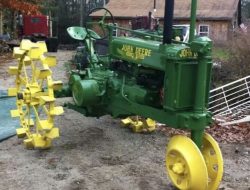
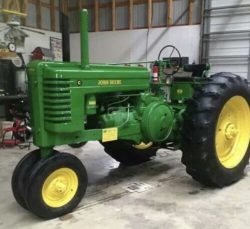
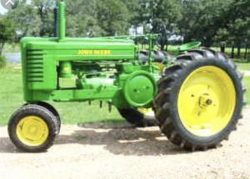
Congratulations to Adreanna Segraves of Adrian, MI. Adreanna won a Buckley 2019 calendar for being the sixth person to correctly answer the January 2019 Buckley trivia contest question.
Thanks!
Question 18:
Question: What was the largest steam locomotive ever made?
Answer: The Big Boy #4000 class 4-8-8-4 articulated steam locomotive.
History: The American Locomotive Company built a fleet of twenty-five #4000 class 4-8-8-4 articulated steam locomotives from 1941 to 1944, known as the Big Boys. Initially built to haul freight for the Union Pacific Railroad over the Wasatch Mountains between Ogden, Utah & Green River, Wyoming. In the late 1940s, they were reassigned to Cheyenne, Wyoming where they hauled freight over Sherman Hill to Laramie Wyoming. They were the only locomotive to use a 4-8-8-4 wheel arrangement consisting of a four-wheel leading truck for stability entering curves. Two sets of 8 driving wheels & four-wheel trailing truck to support the large firebox. According to a Union Pacific executive, the #4000 class 4-8-8-4 series steam locomotive was to be named the “Wasatch”. During construction, a worker scrawled “Big Boy” in chalk on the front of one of the locomotives. With that, the legendary name was born & stuck. The last run of a Big Boy was July 21st, 1959. There are 8 surviving Big Boys in museums with two of them in operable condition, #4014 & #4012.
How big was the Big Boy?
Length: 85 feet 3.4 inches
Width: 11 feet
Height: 16 feet 2 1/2 inches
Total weight: 1,250,000 lbs.
Fuel capacity: 28 short tons
Water capacity: 25,000 gallons
Boiler pressure 300 psi
Cylinders: 4
Cylinder size: 23.75” x 32”
Max speed: 80 mph
Cost to build in 1941: $265,000.00
In today’s money that would be: $4,558,811.22
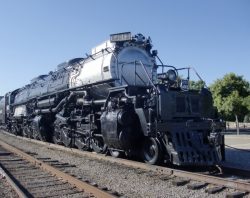
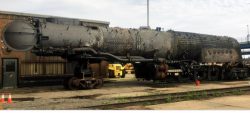
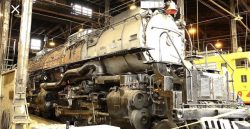
Congratulations to John Smith of Lowell, MI. John won a Buckley 2019 calendar for being the tenth person to correctly answer the December 2018 Buckley trivia contest question.
Thanks!
Question 17:
Question: What was the first production tractor to come Standard with a turbocharger?
Answer: The Allis-Chalmers D19 diesel.
History: Allis-Chalmers introduced the model D19 diesel tractor in 1961 to compete with other higher horsepower tractors from the competition. They achieved this with a six-cylinder diesel engine with a turbocharger, making it the first production tractor to come with a turbocharger as standard equipment. The turbocharger increased both horsepower and fuel economy. Allis-Chalmers manufactured the model D19 from 1961 to 1964 with 10,591 produced.
Congratulations to Dan Carey of Williamsport, PA. Dan won a Buckley calendar for being the eighth person to correctly answer the October 2018 Buckley trivia contest question.
Question 16:
What does the “70” represent in the Oliver model 70 tractor?
Answer: 70-octane. The engine in the Oliver 70 tractor was designed to run on 70-octane gasoline.
History: In 1935, the Oliver Farm Equipment Company introduced the Oliver Hart-Parr model 70 tractor. The smooth running 6 cylinder engine in the model 70 was designed to burn 70-octane gasoline. With its automotive styling, the Oliver 70 was a very attractive Tractor. Oliver 70 tractors were offered in two basic types, row-crop & Standard-tread. Within the two types the following models were offered:
Row-crop
Standard
Orchard/Grove
High-clearance
Industrial
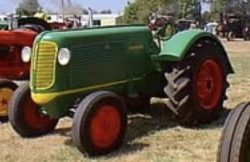
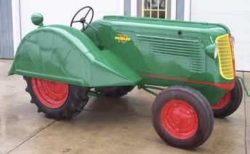
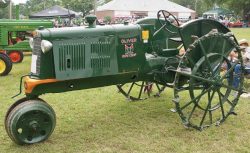
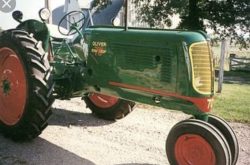
In 1937, the styling of the 70 was updated and the Hart-Parr name was dropped. The Oliver 70 was manufactured from 1935 to 1948. There were about 63,000 Oliver 70 tractors manufacturing over the 13-year production run.
Congratulations to Lorin Burch of Boyne City, Michigan. Lorin won a 2019 Buckley calendar for being the seventh person to correctly answer the October 2018 Buckley trivia contest question.
Question 15:
Question: What steam locomotive holds the world all-time speed record for a steam locomotive?
A) The Flying Scotsman
B) The Orient Express
C) The Mallard
D) Hogwarts Express
Answer C) The Mallard
History: The Mallard was used on the London and North Eastern Railway. The Mallard was numbered 4468. It is a Class A4 4-6-2 Pacific steam locomotive, built in 1938 by the Doncaster Works in London England. To this day The Mallard holds the world top speed record for a steam locomotive at 126 MPH. The Mallard is now on display at The National Railway Museum in York England.
Congratulations to Katie Bancroft, Interlochen, MI. Katie won a Buckley 2019 calendar for being the second person to correctly answer the September 2018 Buckley trivia contest question.
Question 14:
Question: The 1st production Fordson tractors were shipped to England to help with food production for WW1. These tractors were known as MOM tractors. What does MOM stand for?
Answer: Ministry of Munitions
History: Deriving its nickname from the initials of the branch of the British government set up during WW1 to procure workable farm tractors & equipment to produce food for the war effort.
Congratulations to Larry Nelson of Allegan, Michigan. Larry won a Buckley window decal for being the fourth person to correctly answer the August 2018 Buckley trivia contest question.
Question 13:
Question: What John Deere tractor model was the original prototype designed to compete with the International Harvester’s Farmall Row Crop tractor in the late 1920’s?
- John Deere model “A”
- John Deere model “B”
- John Deere model “C”
- John Deere model “GP”
Answer: C) John Deere model “C”
History: The John Deere model “C” tractor was the original prototype designed to compete with International Harvester’s Farmall Row Crop tractor. John Deere began working on the design in 1926, and over the next couple of years, they produced a small number of demonstrator model “C” tractors to test. By the time John Deere was satisfied with the prototype and ready to manufacture and sell it to the public, it was determined that model “C” sounded to much like model “D” when customers were phoning in orders on the poor quality phone systems of the day. So, the model “C” was changed to the model “GP” which stands for General Purpose. The John Deere GP tractor was in production from 1928 to 1935.
Congratulations to Corey Wills of Mayville, Michigan. Corey won a 2019 Buckley calendar for being the fifth person to correctly answer the July 2018 Buckley trivia contest question
Question 12:
Question: Which of the following farm equipment companies was the first to manufacture a truck? A) Allis-Chalmers B) Avery Company C) John Deere ( Deere & Company) D) International Harvester E) Minneapolis Steel & Machinery Co. F) Advance-Rumely Co. G) Moline Plow Company H) J.I. Case Threshing Machine Co.
Answer: C) John Deere (Deere & Company)
History: Deere & Company entered the truck business in 1907 when they bought out the Clarkmobile Automotive Company & moved the firms machinery & equipment to Moline Illinois. There, they began building a 2 1/2 ton Deere truck with a horizontally opposed engine rated a 20hp.
International Harvester, 1909 the Auto Wagons.
Avery Company, 1910 the Avery Gasoline Farm Wagon.
J.I.Case Threshing Machine Co, 1912 the Case truck.
Allis-Chalmers, 1915 the Allis-Chalmers Tractor Truck.
Minneapolis Steel & Machinery Co, 1918- 1929 the Twin City truck.
Advance-Rumely Co, 1919-1929 the Rumely truck.
Moline Plow Co, 1920-1923, the Moline truck.
Congratulations to Austen Hughey of Harbor Springs, Michigan. Austen won a 2019 Buckley calendar for being the ninth person to correctly answer the June 2018, Buckley trivia contest question.
Question 11:
In what city and state was the first Economy gas engine manufactured?
Answer: Sparta, Michigan
History: Peter H. Holm founded the Holm’s Machine Manufacturing Company in Sparta, Michigan, some time before 1909 to manufacture the Economy gas engine with a governor of his our design. In 1912 Sears, Roebuck & Company purchased the Holm’s Machine Manufacturing Company and then immediately resold the company to Hercules Buggy Company of Indianapolis, Indiana. Hercules Buggy Company reorganized as the Hercules Gas Engine Company. Hercules sold engines under its own name as well as the Economy name through Sears, Roebuck stores & catalog. plus other brand names like Jaeger, Arco, plus others.
Congratulations to Mike Woodward of Newaygo, Michigan. Mike won a 2018 Buckley calendar for being the fourth person to correctly answer the May 2018, Buckley trivia contest question.
Question 10:
Three part question – What year did the Desoto automobile debut? Desoto was a division of what company? What model year was the Desoto marque discontinued?
Answer: 1928, Chrysler Corporation, 1961
History: Desoto was an American automobile marque that was manufactured and marketed by the Desoto division of the Chrysler Corporation from 1928 to the 1961 model year. The Desoto marque was officially discontinued November 30th 1960. Desoto made over two million cars.
Congratulations to Walt Rohn, of St. Louis, Missouri. Walt won a 2018 Buckley calendar for being the sixth person to correctly answer the April 2018, Buckley trivia contest question.
Question 9:
What year did Case take control of International Harvester’s agricultural division, merging it into CASEIH?
Answer: Case IH is a brand of agricultural equipment. It was created in 1985 when Tenneco bought selected assets of the agricultural division from International Harvester and merged it into its J.I.
History: In 1842 Jerome Increase Case formed the J.I. Case Threshing Machine Company. In 1902 McCormick Harvesting Machine Co, Deering Harvester Co, Milwaukee Harvesting Co, Plano Manufacturing Co and Warde – Bushnell & Glessner merged to form International Harvester Company in Chicago. In 1985 Case and International Harvester merged to form CASEIH. In 1999 CASEIH merged with New Holland AG to form a new parent company: CNH Global. The majority owner of CNH Global is Fiat of Italy.
Congratulations to Norma Hilbrandt of Rapid City, Michigan. Norma won a 2018 Buckley calendar for being the sixth person to correctly answer the March 2018, Buckley trivia contest question.
Question 7:
What two design characteristics do the Little Bull tractor, the Happy Farmer Model B tractor, and the Allis-Chalmers 10-18 tractor share?
Answer: All three tractors are of three-wheel design and have 2 cylinder engines
History: (order as pictured above)
1) Allis-Chalmers Company, Milwaukee Wisconsin, Allis-Chalmers 10-18hp 1914 – 1923
2) Bull Tractor Company, Minneapolis, Minnesota, Little Bull 5-12hp 1913 – 1917
3) La Crosse Tractor Company, La Crosse, Wisconsin, Happy Farmer model B 12-24hp, 1914-1919
Congratulations to Lori Gelinas of Rapids City MI. Lori won a 2018 Buckley calendar for being the third person to correctly answer the January 2018, Buckley trivia contest question.
What production tractor was the first to come with an electric starter, electric lights, and electric governor as standard equipment?
Answer: The 1917 Moline Universal Model D
History: The Moline Universal model D was made by the Moline Plow Company of Moline Illinois. It was launched in 1917 and was the first production tractor to come with an electric starter, electric lights and an electric governor as standard equipment. It would be another 30 years before these important features would become commonplace in the tractor industry. The model D was made from 1917 to 1923. It had a horsepower rating of 9-18. In 1929 Moline Plow Company, Minneapolis Steel & Machinery Company and Minneapolis Threshing Machine Company merged to form Minneapolis-Moline.
Congratulations to Mike Polega of Cadillac, Michigan. Mike won a 2018 Buckley calendar for being the fourth person to correctly answer the November 30, 2017, Buckley trivia contest question.
October’s question: What farm equipment company invented the word ‘tractor’?
Answer: Hart-Parr in 1906
History: One day while writing advertising copy, The sales manager for the Hart-Parr company W.H. Williams was struggling with the cumbersome words “gasoline traction engine ” (that is what tractors were called before the advent of the word tractor) when a new word ‘tractor’ flashed into his mind- a word combining ‘traction’ & ‘motor’. He wrote tractor in his advertising copy and the newly coined word was born!
Congratulations Kenny Fuller of Big Rapid Michigan. Kenny won a 2018 Buckley calendar for being the sixth person to correctly answer the October 1, 2017, Buckley trivia contest question.
Winner of the Fourth Buckley trivia contest question is: Brittany Malloy of Bath, Michigan.
Brittany wins a 50th Anniversary Buckley t-shirt!
Brittany was the first to correctly answer the question:
What make and model was the first to rubber as standard equipment?
Answer: Allis-Chalmers WC
History: The Model WC was a tractor made by Allis-Chalmers from 1933 to 1948. The WC was designed from its start as a nimble, low-cost, but well-powered row-crop tractor that would make the best use of pneumatic rubber tires, which Allis-Chalmers had just introduced to agriculture in 1932.
Winner of the Third Buckley trivia contest question is: Ryan Fennema of Dorr, Michigan.
Ryan wins a 50th Anniversary Buckley t-shirt!
Ryan was the first to correctly answer the question:
What year did the J.I. Case Threshing Machine Company stop making steam traction engines (steam tractors)?
Answer: 1924
Winner of the Second Buckley trivia contest question is: David VanAlstine of Big Rapids, Michigan.
David wins 50th Anniversary Buckley coffee mug with free refills of fresh apple cider for life at the 1906 Buckley cider mill.
David was the first to correctly answer the question:
What two companies merged in 1925 to form the Caterpillar Tractor Company?
Answer: The Holt Company and the C.H. Best Company
Winner of the First Buckley trivia contest question is: Marcy Jones of Dorr, Michigan.
Marcy wins a Buckley 50th Anniversary t-shirt for being the first one to correctly answer the question:
What was the first production tractor to feature a 3-point hitch?
Answer: Ferguson-Brown model A
History of the Ferguson-Brown model A
The first production tractor to come with a 3-point hitch was the 1936 Ferguson-Brown model A. The Ferguson-Brown Company was a British agricultural machinery company formed by Harry Ferguson in partnership with David Brown Ltd. The Ferguson-Brown model A tractor was made from 1936 to 1939 with only 1,356 being produced.
In 1938, Harry Ferguson took a Ferguson-Brown tractor to America complete with a range of 3-point implements. Harry demonstrated the tractor with his 3-point hitch system to Henry Ford. Henry was so impressed that he and Harry Ferguson sealed a deal with a handshake. The outcome of this agreement was the famous Ford-Ferguson model 9N tractor.
First Trivia Question, June 17th 2017: What was the first production tractor to feature a 3-point hitch? Winner was Marcy Jones of Dorr, MI.
